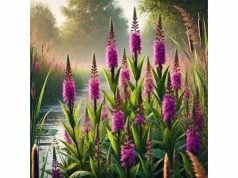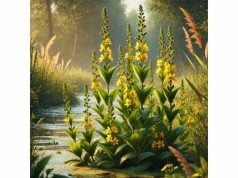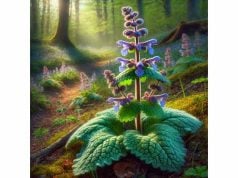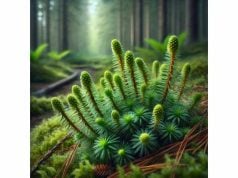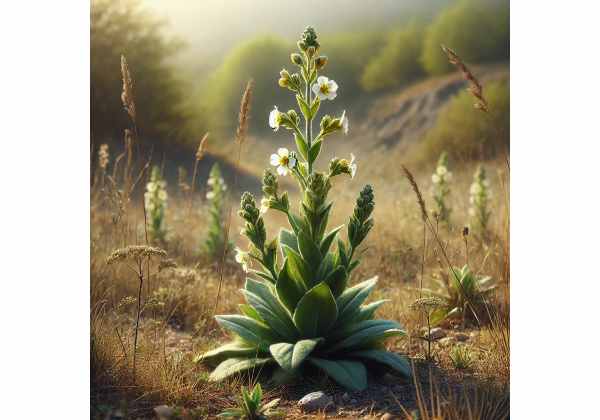
Lithospermum comprises a genus of flowering plants within the Boraginaceae family, admired for its vibrant, funnel-shaped blooms and historically significant medicinal potential. In traditional herbal practices, certain species have been employed to support urinary health, aid in balancing hormones, and even provide mild anti-inflammatory effects. These intriguing benefits may stem from bioactive compounds such as phenolic acids, flavonoids, and specialized alkaloids. While many species are grown for their ornamental appeal, the genus also includes plants historically studied for potential diuretic, anti-inflammatory, or hormonal influences. In this comprehensive guide, we’ll examine the plant’s taxonomy, chemistry, benefits, safe use guidelines, and notable research findings.
Table of Contents
- Botanical Overview and Notable Features
- Chemical Composition and Notable Constituents
- Health Perks and Fundamental Characteristics
- Practical Applications and Key Precautions
- Recent Investigations and Major Observations
- Frequently Asked Concerns and Quick Answers
Botanical Overview and Notable Features
Lithospermum belongs to the diverse Boraginaceae family, which also includes borage, comfrey, and forget-me-nots. Various Lithospermum species occur across North America, Europe, and Asia, each adapted to a range of climates and soil conditions. Although individuals may differ in size, flower hue, and leaf structure, many share a classic “borage family” aesthetic: coarse or bristly leaves and trumpet-like blooms.
Taxonomic Classification
- Family: Boraginaceae
- Genus: Lithospermum
- Common Names: Gromwell, Stoneseed, Puccoon (in certain North American variants)
Specific species and local forms may adopt additional names, reflecting cultural usage or morphological distinctions.
Physical Description
- Growth Habit:
- Many Lithospermum species are herbaceous perennials, although some present as annuals or subshrubs.
- Plant heights can range from a few inches to over a foot, depending on conditions and species.
- Leaves:
- Typically lanceolate or linear, often lightly covered in fine hairs or a slightly rough texture.
- Arrangement may be alternate, spiraling around the stem.
- Flowers:
- Showy corollas in shades of yellow, orange, or purple-blue, shaped like small funnels or elongated tubes.
- Blooms often cluster at the tips of stems, opening sequentially through the growing season.
- Roots:
- Some species develop taproots or branching fibrous systems.
- Historical references describe vivid red or orange pigments in certain roots, which indigenous tribes sometimes utilized as dyes (puccoon).
- Seeds:
- The genus name, Lithospermum, literally signifies “stone seed,” referencing the small, hard, stone-like seeds produced.
- Seeds often display a distinctive sheen or light coloration.
Habitat and Growing Conditions
- Native Regions:
- Found in open meadows, prairies, and forest edges across temperate zones.
- Some prefer rocky or sandy soils, while others tolerate richer, moist loams.
- Light and Soil Requirements:
- Generally sun-loving, with many species thriving in full sun or partial shade.
- Well-draining soil is typically crucial to avoid root rot or fungal issues.
- Climatic Adaptations:
- Cold tolerance varies, but numerous species survive in moderate winters.
- Overly wet or humid climates can hamper growth if the soil remains saturated.
Cultural and Historical Context
Lithospermum species have a storied place in indigenous North American traditions, particularly for root dyes (e.g., Native American tribes using “puccoon”) and potential medicinal potions. In European herbal lore, certain species found a niche in medieval apothecaries for perceived diuretic and hormone-modulating properties. Although overshadowed by more famous herbs, the genus still intrigues modern herbalists and researchers who revisit these historical uses.
Ornamental Appeal
Gardeners sometimes grow decorative species for their showy flowers and robust, drought-tolerant nature. In well-tended rock gardens or wildflower meadows, these plants can add a dash of bright color and act as pollinator attractants. Because Boraginaceae flowers often entice bees and butterflies, they benefit biodiversity in pollinator-friendly landscapes.
With this overview in mind, we’ll next investigate the chemical composition that may underpin the reported health benefits—ranging from hormone balance to mild anti-inflammatory action.
Chemical Composition and Notable Constituents
While not every Lithospermum species has been comprehensively analyzed, enough studies exist to outline some of the key phytochemicals within the genus. These compounds may confer the potential therapeutic properties long attributed to the plant. Below, we explore commonly detected groups of bioactive ingredients.
- Pyrrolizidine Alkaloids (PAs)
- Occurrence: Common in the Boraginaceae family. Some can be harmful to the liver if consumed in high doses or chronically.
- Relevance: PAs in certain Lithospermum species underscore the importance of cautious usage and thorough research before internal consumption. However, specific species may have minimal or different alkaloid profiles.
- Caffeic Acid Derivatives
- Examples: Rosmarinic acid, chlorogenic acid, or lithospermic acid.
- Potential Effects: These phenolic acids often exhibit antioxidant, anti-inflammatory, and vasoprotective influences in laboratory studies. They may also contribute to immunomodulatory qualities.
- Flavonoids
- Common Types: Quercetin, kaempferol, and apigenin derivatives.
- Properties: Flavonoids generally help scavenge free radicals, support capillary integrity, and occasionally modulate enzyme activity related to inflammation or metabolism.
- Triterpenoids
- Function: Can exhibit anti-inflammatory or adaptogenic traits.
- Occurrence: Found in various root structures among the genus, though not always thoroughly quantified. Triterpenoids might factor into some “harmonizing” properties used in traditional formulas.
- Napthaquinones
- Notable Compound: Shikonin is a hallmark compound in certain related genera (like Lithospermum erythrorhizon, often used in East Asian medicine).
- Role: Shikonin and allied naphthoquinones demonstrate wound-healing, antimicrobial, and anti-inflammatory actions. They also impart distinctive red pigments to the roots.
- Caution: While prized for topical use in some contexts, ingestion of naphthoquinones must be approached carefully due to potential toxicity or allergenic risk.
- Tannins
- Characteristic: Provide an astringent effect, possibly beneficial for minor skin irritations or diarrhea control in folk medicine.
- Implications: Tannins can also reduce the absorption of certain nutrients or medications if consumed simultaneously.
- Essential Oils (Minimal)
- Volatile Compounds: Some species produce faint aromatic oils, though the genus is not widely known for strong fragrance.
- Biological Significance: Could contribute mild antimicrobial or insect-repelling effects, but data remain limited.
- Minerals and Trace Elements
- Nutrient Profile: In certain soils, Lithospermum might accumulate calcium, magnesium, or iron.
- Considerations: Mineral content can vary with environment, impacting any potential nutritive or medicinal claims.
Variability Across Species
Chemical composition can fluctuate drastically among species and even within the same species grown in different regions. For instance, Lithospermum erythrorhizon (commonly known as red-root gromwell) is famously high in shikonin, while other species might contain less or differ in their dominant bioactive compounds.
Processing Influence
Extraction technique matters:
- Drying/Heating: Heat can degrade some volatile or delicate compounds, whereas others might be stabilized or made more bioavailable.
- Solvent Choice: Alcoholic tinctures draw out alkaloids, phenolics, and flavonoids more effectively, while water-based infusions highlight soluble tannins and certain phenolic acids.
Synergistic Effects
Traditional herbal approaches often emphasize the synergy of multiple constituents, suggesting that even if one compound is moderate in activity, combining it with others might yield broader benefits. This synergy concept underscores the complexity of evaluating any single chemical in isolation.
Given these varied chemical profiles, let’s shift to how these constituents might underpin potential health benefits, from hormone regulation to skin support—reflecting both historical usage and emerging scientific interest.
Health Perks and Fundamental Characteristics
Lithospermum’s centuries-spanning usage in folk medicine spans diverse cultures—Native Americans in North America, certain European herbal traditions, and East Asian formulaic therapies. While modern science has validated only a portion of these claims, the herb’s unique composition suggests an array of potential properties.
Hormonal Balance and Endocrine Support
- Historic Context: Some species, especially in North America, were historically labeled “stoneseed” or “gromwell” and used in attempts to influence reproductive or hormonal aspects—like easing menstrual discomfort or assisting in birth control.
- Possible Mechanism: The presence of lithospermic acid or certain phenolic compounds might modulate thyroid function or reproductive hormones, though scientific backing is still preliminary.
Anti-Inflammatory Potentials
- Flavonoids & Phenolic Acids: The combination of rosmarinic acid, caffeic acid derivatives, and other antioxidants can quell minor inflammatory pathways.
- Topical Use: Ointments derived from certain species (notably those containing shikonin) have been used in East Asia to calm inflamed or irritated skin.
Skin and Wound Care
- Traditional Remedies: Some East Asian therapies employ red-root gromwell extracts for burns, eczema, or minor cuts, citing improved healing times.
- Mechanism: Shikonin and related compounds appear to have antibacterial, anti-inflammatory, and wound-repairing influences.
Urinary and Kidney Support
- Mild Diuretic Action: In folk medicine, stoneseed teas were sometimes recommended to support urinary tract function, possibly due to mild diuretic effects from alkaloids or phenolics.
- Caveat: Excessive consumption might pose toxicity risks, so professional guidance is essential.
Antioxidant Defense
- Free Radical Scavenging: Phenolic compounds can defend cells against oxidative stress, which in turn supports overall wellness and healthy aging.
- Internal vs. External: Some species might offer gentle antioxidant benefits in teas or tinctures, while external applications harness their potential for skin protection.
Potential Antimicrobial Effects
- Lab Findings: Preliminary in vitro studies on Lithospermum extracts indicate mild antimicrobial activity against certain bacteria or fungi.
- Practical Application: This property might partly explain the herb’s historical use in wound care or as a topical wash.
Stress and Adaptation
- Holistic Claims: Certain herbal traditions classify gromwell-like species among adaptogens or harmonizing agents, though the evidence remains anecdotal.
- Possibility: If the compounds influence inflammatory and immune pathways, they might help the body adapt to stress or reduce fatigue.
Blood Sugar and Metabolic Notes
- Emerging Research: Some rodent studies on Lithospermum-derived extracts suggest improved glucose tolerance or insulin sensitivity, but these findings are far from conclusive for human application.
- Future Prospects: More robust clinical trials would be needed to confirm any metabolic advantage.
Given these glimpses into Lithospermum’s potential, it’s evident that the genus may extend beyond simple ornamental or dye uses. However, the presence of potentially toxic alkaloids signals caution. Next, we’ll examine usage approaches, including safe practices, dosage hints, and known precautions to keep in mind.
Practical Applications and Key Precautions
Anyone intrigued by Lithospermum’s potential should approach it with both enthusiasm and caution. Although the plant’s historical track record is fascinating, modern science has yet to provide a comprehensive safety profile for every species. Below, we delve into best practices for usage and important advisories.
Medicinal and Culinary Approaches
- Teas and Infusions
- Preparation: A small amount of dried root or aerial parts steeped in hot water for 10–15 minutes.
- Taste Profile: Often earthy, potentially somewhat bitter or tannic. Some formulations suggest combining with sweeter herbs for flavor balance.
- Caution: Be mindful of potential pyrrolizidine alkaloids. Long-term or high-dose consumption without professional guidance could pose liver risks.
- Tinctures and Extracts
- Concentration: Alcohol-based tinctures may amplify the extraction of alkaloids, phenolics, and flavonoids.
- Recommended Dosing: Generally uncertain due to insufficient standardization. A conservative approach—like a few drops or a low-dose measure daily—should be adhered to, ideally under an experienced practitioner’s guidance.
- Topical Balms and Ointments
- Common in East Asia: Shikonin-rich species may be included in lotions for wound care or inflammatory skin conditions.
- DIY or Commercial?: Some homemade salves exist, but it’s safer to select standardized products or consult professional formulations.
- Root Dyes
- Historical Use: Red-root or orange-root variants were prized for their strong pigments in dyeing cloth or personal items.
- Modern Craft Revival: Artisans exploring natural dyes can experiment with ethically sourced Lithospermum roots to produce shades of red or purple.
Dosage Suggestions
- Limited Data: Few authoritative references define safe daily intakes. Historical accounts vary widely, with no consistent standard.
- Guiding Principle: For newly introduced herbs (especially with potential toxicity), minimal effective dosages over short durations are safer than high-intensity regimens.
- Professional Input: A trained herbalist or naturopath can tailor usage to individual needs, factoring in potential interactions or side effects.
Potential Interactions and Contraindications
- Liver Health Concerns
- PAs can accumulate in the liver, leading to serious damage if misused. Individuals with pre-existing liver conditions should avoid or limit use.
- Chronic or repeated ingestion magnifies risk.
- Pregnancy and Lactation
- Traditional knowledge sometimes cites stoneseed for contraceptive or hormone-related effects, suggesting pregnant or nursing women must steer clear unless under strict professional oversight.
- The unknown or possibly negative impact on fetal development underscores the need for caution.
- Medication Overlaps
- Potential hormone or thyroid modulation might interfere with hormone therapy, birth control pills, or thyroid medications.
- If you’re on prescription meds, consult a healthcare provider before adding Lithospermum.
- Allergic Reactions
- Skin rashes, itching, or respiratory discomfort can arise from contact with or ingestion of an unfamiliar herb. Conduct patch tests prior to widespread topical use.
Safe Handling and Preparation Tips
- Identify the Right Species: Confusion with other Boraginaceae plants is easy. Purchase from reputable sources or confirm identity with botanical experts if foraging.
- Harvest Timing: Roots or aerial parts often hold the highest concentration of active compounds when the plant is in bloom or just after. Gather responsibly, leaving enough to sustain wild populations.
- Dry and Store Properly: Store dried material in airtight containers, away from light and humidity, to preserve potency and prevent mold.
Combining with Other Herbs
- Blending Approach: Many herbal traditions pair complementary plants for synergy (e.g., mixing mild adaptogens, relaxing nervines, or digestive aids).
- Risk of Overlapping Alkaloids: Some companion plants (like comfrey or borage) might also contain PAs, thus compounding potential toxicity. Balance is crucial.
Ethical and Environmental Considerations
- Sustainable Harvesting: Overharvesting wild plants damages fragile ecosystems. Cultivation in gardens or purchasing from ethical growers is advisable.
- Look for Organic or Third-Party Tested Products: Ensures minimal contamination from pesticides or heavy metals, plus some level of quality assurance.
By adhering to these usage guidelines and respecting potential hazards, individuals can explore Lithospermum’s possible therapeutic and cultural roles responsibly. Next, we’ll spotlight significant scientific inquiries and data that shed further light on this genus’s medicinal promise and pitfalls.
Recent Investigations and Major Observations
Scholarly interest in Lithospermum has waxed and waned over the decades, influenced by shifting herbal trends, the discovery of toxic alkaloids, and a growing global emphasis on evidence-based medicine. Below are some notable studies and the insights they provide.
- (2005) “Evaluation of Lithospermum Officinale Extracts in Hormone Modulation”
- Journal: Phytotherapy & Endocrine Research
- Key Highlights: Researchers examined how phenolic-rich extracts influenced rodent reproductive hormones. Results suggested slight inhibition of gonadotropin levels, supporting historical claims of contraceptive-like effects. However, the dosage required to see meaningful changes was high, raising toxicity concerns.
- (2009) “Antioxidant and Anti-Inflammatory Potential of Gromwell Root”
- Publication: International Journal of Herbal Pharmacology
- Findings: Tested in vitro on human cell lines, root extracts demonstrated moderate free radical scavenging and reduced pro-inflammatory markers. Shikonin derivatives were implicated, though further research was recommended for clinical relevance.
- (2012) “Toxicological Review of Pyrrolizidine Alkaloids in Boraginaceae”
- Focus: A broad overview of potential hepatotoxicity in plants like comfrey, heliotrope, and some Lithospermum species.
- Conclusion: Encouraged caution in medicinal use, advocating for thorough screening and identifying safe species/chemotypes free of harmful PAs.
- (2016) “Wound-Healing Activity of Lithospermum Erythrorhizon Ointment”
- Venue: Asian Dermatological Therapeutics
- Subjects: Studied on mild burn injuries in a small human volunteer group. The ointment reduced healing time slightly compared to a placebo, consistent with the recognized role of shikonin in tissue regeneration.
- Limitations: Sample size was small; urged larger controlled trials.
- (2020) “Comparative Analysis of Lithospermum Flavonoid Profiles”
- Journal: Plant Chemistry Frontiers
- Results: Different species displayed distinctive flavonoid “fingerprints.” Some were high in luteolin derivatives, others in quercetin. These differences underscore the importance of precise species identification when seeking consistent medicinal effects.
Observations and Trends
- Interest in Hormonal Pathways: The genus’s link to reproductive hormones remains a compelling focus, but the potential for toxicity complicates practical usage.
- Topical Formulations: Shikonin and allied naphthoquinones continue to drive interest in wound-healing, burn care, and anti-inflammatory creams.
- Pharmacognosy and Safety: Ongoing calls for more robust screening of alkaloid content, especially in new or lesser-known Lithospermum species used in modern herbal markets.
Gaps and Future Directions
- Human Clinical Trials: Robust, large-scale clinical data remain scarce. Ethical protocols require thorough toxicity evaluations, limiting progress.
- Identification of Safe Chemotypes: A major research priority is pinpointing species or strains with minimal or absent PAs, allowing for safer consumption.
- Innovative Extraction Methods: Advanced techniques (e.g., supercritical CO₂ extraction) might isolate beneficial compounds while minimizing toxic fractions.
These studies highlight the complexities inherent in harnessing Lithospermum’s medicinal potential. The genus carries historical promise for hormonal support, wound care, and antioxidant benefits but requires modern safeguards and thorough knowledge. For those intrigued, professional consultation and vigilance remain imperative. The FAQ below addresses common questions about usage, identification, and general cautionary notes.
Frequently Asked Concerns and Quick Answers
Which Lithospermum species is best for herbal use?
Different species hold varied compounds. For instance, Lithospermum erythrorhizon is popular in certain Eastern ointments. Always confirm the species and consult an expert, as some variants may contain higher levels of toxic alkaloids.
Is it safe to consume Lithospermum tea regularly?
Long-term or frequent ingestion can pose risks due to potential pyrrolizidine alkaloids. If you plan to include it in your diet, do so under medical guidance, limiting quantity and duration.
How can I grow Lithospermum in my garden?
Most species thrive in well-draining soil and full sunlight. Ensure moderate watering – avoid waterlogged conditions. Some varieties are drought-tolerant, making them suitable for rock gardens or xeriscaping.
Can Lithospermum help with menstrual issues?
Historically, some cultures used stoneseed or gromwell for reproductive health. Modern science has yet to confirm efficacy or safety. Seek professional advice if you’re exploring hormone-related concerns.
Are all Lithospermum roots red or purple?
Not all. While red or purple roots are famous in certain species, others have lighter or more neutral hues. The dye potential largely depends on species-specific pigment presence.
Disclaimer
This article is for educational purposes only and should not be viewed as a substitute for professional medical guidance. Always consult a healthcare provider or experienced herbalist when considering new supplements or herbal remedies.
If you found this guide helpful, feel free to share it on Facebook, X (formerly Twitter), or any social platform you enjoy. Join us online for more insights into the captivating world of herbal wellness and gardening!

